Antique knives possess a captivating allure, much like the echoes of history, each bearing the legacy of a bygone era. As collectors and enthusiasts delve into the world of cutlery, one indispensable skill emerges as the key to unlocking the secrets concealed within these storied blades: antique knife identification.
In this exploration, we will embark on a journey that reveals not only the charm of antique knives but also the vital significance of accurately identifying these historical treasures. This article is your guide to mastering antique knife identification, a skill that can lead you to hidden historical gems waiting to be unearthed. Join us as we delve into the world of these remarkable artifacts, uncovering the mysteries they hold and discovering the rich tapestry of history they represent.
The Art of Antique Knife Identification
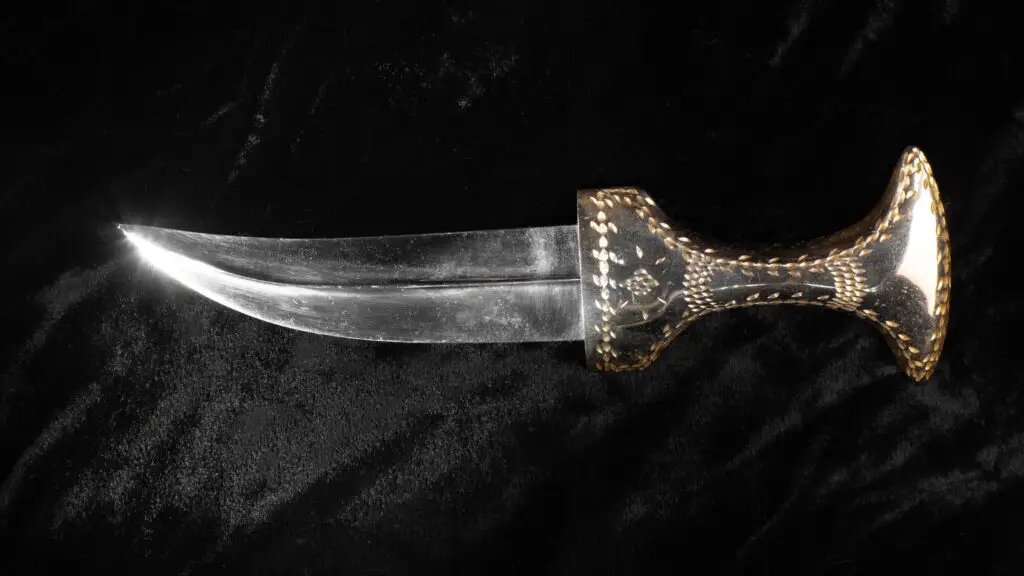
Defining Antique Knives
Before delving into the fascinating realm of antique knife identification, it’s crucial to establish a clear understanding of what antique knives actually are. Antique knives, in essence, are blades that have weathered the sands of time, representing the craftsmanship of yesteryears. They are relics of bygone eras, encapsulating the artistry of different periods and cultures. These blades are characterized by their historical significance, unique designs, and often, exceptional craftsmanship. Their age, typically over a century old, sets them apart as objects of historical and collectible value. Understanding this distinction is the first step on the journey to becoming a proficient antique knife identifier.
Significance of Identifying Historical Pieces
Why, you may wonder, is the identification of antique knives so significant? The answer lies in the rich tapestry of history that each of these blades weaves. These knives are not merely tools or collectibles; they are tangible links to the past. Through their identification, we gain insights into the technology, artistry, and social context of the times in which they were created. They serve as historical markers, telling stories of different eras, regions, and cultures. Mastering the art of antique knife identification enables enthusiasts to appreciate the historical, cultural, and technological evolution of cutlery, offering a profound connection to our heritage.
Brief Historical Overview of Antique Knife Craftsmanship
As we embark on this journey of antique knife identification, it’s worth taking a moment to appreciate the rich history of knife craftsmanship. The art of knife making dates back thousands of years, evolving alongside human civilization. From the rudimentary stone blades of prehistoric times to the intricately detailed knives of the Middle Ages and the beautifully ornate examples of the Renaissance, antique knives showcase the evolution of materials, techniques, and artistic styles. Each era left its mark on these tools, shaping their form and function. By understanding this historical backdrop, antique knife identification becomes not just a hobby but a voyage through time and culture.
In the next section, we’ll delve deeper into the tools and techniques you’ll need to master the art of antique knife identification, bringing you closer to hidden historical gems waiting to be discovered.
Tools and Techniques for Mastery
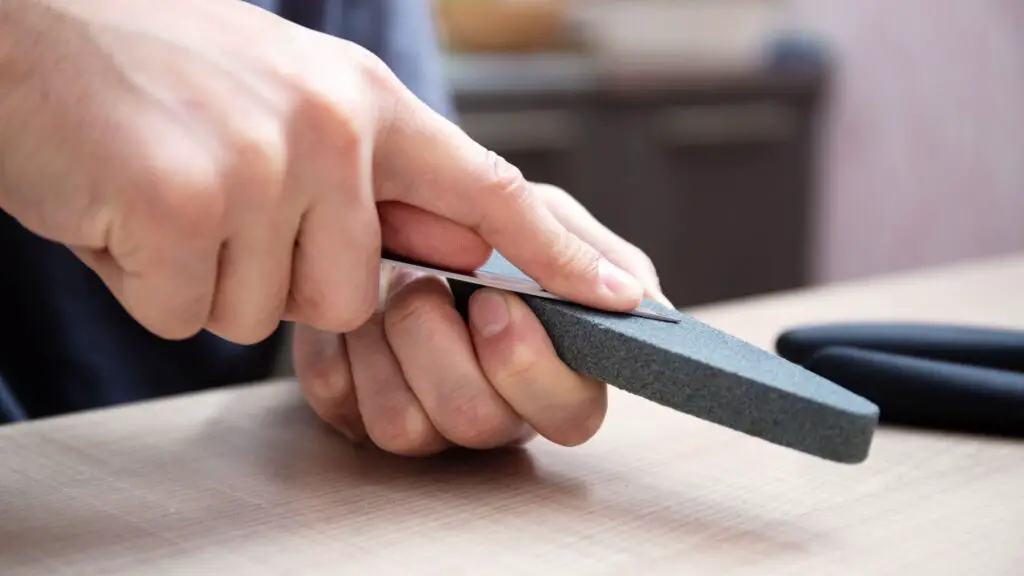
Gaining Expertise in Antique Knife Identification
Becoming proficient in antique knife identification is a journey that requires dedication and the acquisition of specific tools and techniques. To embark on this path, it’s essential to gather knowledge and expertise from various sources. Books, online resources, and perhaps even mentorship from seasoned collectors can provide valuable insights. Familiarize yourself with the terminology used in the world of antique knives, and start to build your own reference library. Joining collector communities and attending knife shows or auctions can also be instrumental in gaining expertise. By investing time in learning and networking, you’ll be well on your way to becoming a knowledgeable antique knife identifier.
The Key to a Discerning Eye
While knowledge forms the foundation of antique knife identification, developing a discerning eye is equally crucial. This skill enables you to recognize the fine details that distinguish one knife from another. Pay attention to the design elements, handle materials, blade shapes, and markings, as these are often telltale signs of a knife’s age, origin, and maker. To refine your discerning eye, closely examine a wide variety of antique knives and practice making attributions based on your observations. As you train your eye, you’ll become more adept at spotting the subtle nuances that define these historical gems.
Emphasizing Attention to Detail
Antique knife identification is a meticulous art that places a premium on attention to detail. When assessing an antique knife, scrutinize it with a magnifying glass to uncover hidden clues. Look for maker’s marks, engravings, and any inscriptions that may reveal the knife’s history. Pay special attention to the condition of the blade, handle, and any associated accessories, as these can significantly impact a knife’s value. The devil is in the details, and by honing your ability to spot them, you’ll be well-equipped to distinguish between ordinary knives and rare historical treasures.
In the next section, we’ll explore the intricacies of identifying hidden historical gems, shedding light on the distinguishing features that make antique knives truly exceptional.
Identifying Hidden Historical Gems

Recognizing Craftsmanship and Materials
In the realm of antique knife identification, the ability to recognize craftsmanship and materials is akin to deciphering a historical code. Antique knives often boast exquisite workmanship that reflects the era in which they were crafted. To identify hidden historical gems, it’s essential to examine the quality of the blade, handle, and any embellishments. Exquisite details such as intricate engravings, ornate inlays, or the use of rare and exotic materials can all indicate a knife’s exceptional craftsmanship. Paying close attention to these aspects allows you to uncover knives with historical and artistic significance.
Exploring Styles and Periods of Antique Knives
Antique knives come in a diverse range of styles, each influenced by the time and place of its creation. Exploring the various styles and periods of antique knives is a crucial aspect of identification. Blades from different regions and historical periods exhibit distinct characteristics, from the elegant simplicity of the Renaissance to the ornate designs of the Victorian era. Understanding the evolution of knife styles provides valuable context for identifying the era in which a knife was made. By delving into these styles, you’ll develop a keen eye for recognizing the unique features that define each period, enhancing your ability to identify hidden historical gems.
Tips for a Successful Identification
Identifying antique knives may seem like a daunting task, but with the right approach, it can be an immensely rewarding endeavor. Here are some tips to ensure a successful identification:
Research and Documentation: Maintain a detailed record of your knives, noting any inscriptions, markings, and historical information associated with each piece.
Consult Experts: Don’t hesitate to seek guidance from experienced collectors or antique knife experts when you encounter a particularly challenging identification.
Use Resources: Take advantage of books, online forums, and reference materials that focus on antique knives. These can be invaluable sources of information.
Hands-On Experience: Handle as many antique knives as possible to become familiar with the materials, designs, and craftsmanship of different eras.
Stay Patient and Persistent: Identifying antique knives can be a process that takes time and practice. Patience and persistence are key to honing your skills.
By recognizing craftsmanship and materials, exploring the styles and periods of antique knives, and following these practical tips, you’ll be well on your way to successfully identifying hidden historical gems in the world of antique knife collecting. In the next section, we will dive deeper into the thrill of the hunt and where to search for these valuable artifacts.
The Thrill of the Hunt
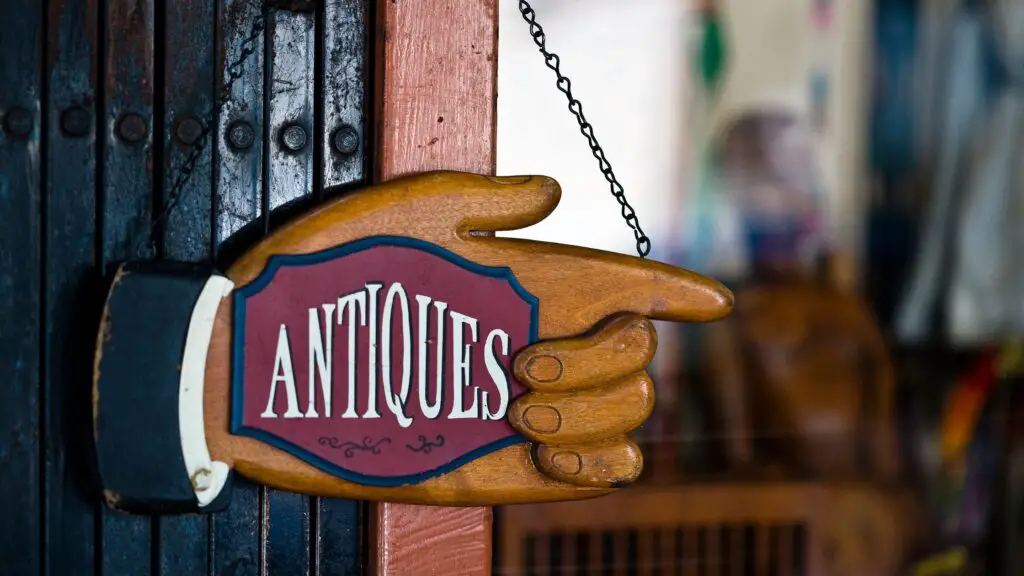
Where to Search for Antique Knives
The journey of antique knife identification is not only a quest for knowledge but also an exhilarating treasure hunt. To embark on this adventure, you’ll need to know where to search for antique knives. These historical gems can be found in a variety of places, and each source offers its own unique set of opportunities. Here are some key locations to consider:
Antique Stores: Traditional antique shops often house a diverse collection of knives from different eras.
Auctions: Both physical and online auctions frequently feature antique knives, providing a chance to acquire rare pieces.
Estate Sales: Estate sales can be a goldmine for antique knife enthusiasts, offering a glimpse into the collections of individuals who have passed their treasures down through generations.
Flea Markets: Flea markets are a great place to discover hidden gems at affordable prices, with the thrill of bargaining.
Knife Shows: Attending knife shows allows you to interact with collectors, dealers, and experts, making it an excellent networking opportunity.
Online Marketplaces: Websites like eBay and specialized knife forums provide a vast array of options for purchasing antique knives.
Stories of Collectors and Their Finds
Part of the charm of antique knife identification is the countless stories of collectors who have unearthed remarkable treasures. These narratives not only inspire but also offer valuable insights into the art of collecting and identifying antique knives. As you embark on your own journey, listening to these stories can provide guidance and motivation. Whether it’s the tale of a collector stumbling upon a rare Civil War-era Bowie knife in an estate sale or the discovery of a beautifully engraved knife hidden in an attic for decades, these stories reinforce the excitement and possibilities that lie ahead in your own pursuit of hidden historical gems.
Embracing the Adventure
Embracing the adventure of antique knife identification is about more than just acquiring historical artifacts. It’s a journey that connects you with the past, introduces you to a vibrant community of collectors, and stirs a sense of curiosity and wonder. It’s an opportunity to explore the craftsmanship of bygone eras and to experience the thrill of discovery. So, as you embark on your quest, remember to embrace the adventure, relish the unexpected, and let the pursuit of antique knives be a source of both knowledge and joy.
In the following section, we’ll provide you with a comprehensive guide to antique knife identification, breaking down the steps and processes that will enable you to become a proficient identifier of these historical treasures.
A Comprehensive Guide to Identification
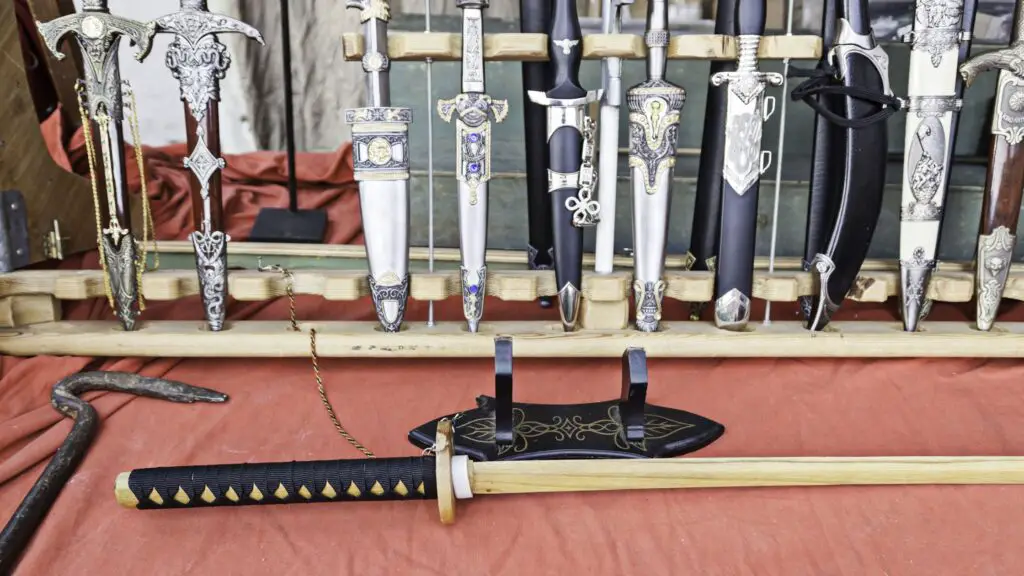
Step-by-Step Process for Identifying Antique Knives
Identifying antique knives requires a systematic approach that combines your knowledge, observation skills, and attention to detail. Here’s a step-by-step process to guide you through the identification journey:
Examination: Carefully inspect the knife’s blade, handle, and any accompanying markings or engravings.
Research: Consult reference materials and online resources to gather information about the knife’s era, style, and possible makers.
Comparison: Compare the characteristics of the knife with known examples from the same period or region.
Documentation: Record your findings, including any unique features, inscriptions, or historical context.
Seek Expert Advice: If you encounter challenging identifications, don’t hesitate to seek guidance from experienced collectors or experts in the field.
Effective Use of Resources and References
In the world of antique knife identification, knowledge is your most potent tool. Utilize a range of resources and references to enhance your expertise:
Books and Guides: Invest in well-regarded books and guides dedicated to antique knives. These provide a wealth of information on different styles, makers, and historical context.
Online Communities: Join forums and social media groups focused on antique knife collecting. Engaging with other enthusiasts can lead to valuable insights and knowledge sharing.
Museums and Exhibitions: Visit museums and exhibitions dedicated to cutlery and craftsmanship to gain inspiration and learn more about the history of knives.
Collector’s Associations: Consider joining collector’s associations related to antique knives. These organizations often offer educational resources and opportunities to connect with experts.
Refining Your Expertise
Antique knife identification is an evolving skill that improves with experience. Here are some tips for refining your expertise:
Continuous Learning: Stay up-to-date with the latest research, trends, and discoveries in the field of antique knife identification.
Networking: Build a network of fellow collectors, dealers, and experts who can provide guidance and share their experiences.
Handling Knives: The more knives you handle, the more you’ll learn. Attend knife shows, handle different types of knives, and hone your ability to recognize quality and craftsmanship.
Document Your Collection: Keep a meticulous record of your collection, noting details of each knife’s history, features, and provenance.
Share Your Knowledge: Teach others what you’ve learned. Sharing your knowledge not only helps the community but also reinforces your own understanding.
For even deeper insights on identifying antique knives, don’t miss the video below.
As you work through this comprehensive guide, you’ll find yourself growing more confident and capable in the realm of antique knife identification. By mastering these steps, you’ll be better equipped to identify hidden historical gems and unlock the rich stories they hold. In the next section, we will explore the value of antique knives and how to appreciate the historical and monetary worth of your discoveries.
Understanding the Value of Antique Knives
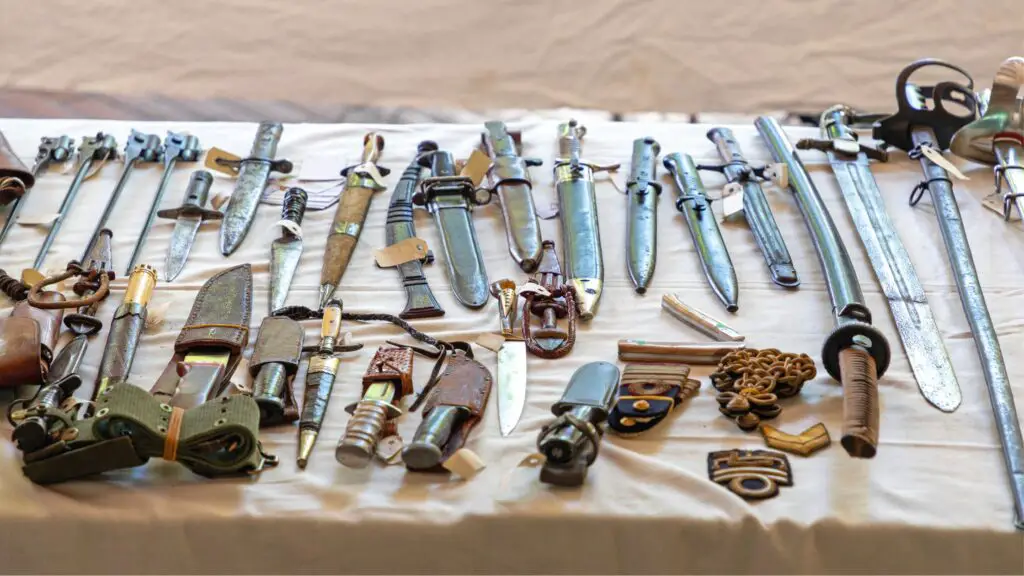
Appraising the Worth of Your Discoveries
Identifying antique knives is not just a matter of historical curiosity; it can also lead to the discovery of valuable pieces. Appraising the worth of your discoveries involves a multi-faceted approach:
Condition: The overall condition of the knife is a primary factor in determining its value. Knives in excellent condition, with minimal wear and well-preserved materials, are often more valuable.
Age and Rarity: Older knives, especially those from specific historical periods, are typically more valuable. Rarity plays a significant role, with unique or limited-edition knives commanding higher prices.
Maker and Markings: Some knife makers or manufacturers are more renowned and collectible than others. Knives with well-known maker’s marks often have higher values.
Historical Significance: Knives associated with historical events or figures can be highly valuable due to their historical relevance.
Materials and Craftsmanship: The quality of materials, craftsmanship, and unique features can contribute to a knife’s value.
Provenance: A knife with a documented history of ownership, especially if it has a connection to a famous person or event, can fetch a premium.
Real-Life Examples of Valuable Finds
To gain a better understanding of the potential value of antique knives, here are a few real-life examples of valuable finds:
Civil War Bowie Knife: A rare Bowie knife from the Civil War era, in excellent condition and with historical documentation, sold for a substantial sum at auction.
Tiffany & Co. Knife: Knives produced by prestigious makers, such as Tiffany & Co., can be highly valuable. A vintage Tiffany & Co. silver-plated knife, with its original box, garnered significant attention from collectors.
Custom Handmade Knives: Custom-made knives, especially those crafted by renowned knife makers, can command premium prices. The uniqueness of the design and quality of materials contribute to their value.
Antique Pocket Knives: Well-preserved antique pocket knives, especially those with unique features or intricate engravings, are often sought after by collectors and can be quite valuable.
Appreciating the Historical and Monetary Value
While the monetary value of antique knives is undoubtedly significant, it’s essential to also appreciate the historical and cultural value they bring. These knives are not just commodities; they are time capsules that offer a glimpse into the past. Each knife tells a story, whether it’s the story of the maker, the era it was produced, or the hands it passed through over the years. By understanding and appreciating the historical context, you can develop a deeper connection to your collection and the world of antique knife identification.
In the final section of this article, we will explore the importance of preserving and displaying your antique knives, ensuring they continue to tell their unique stories for generations to come.
Preserving and Displaying Antique Knives
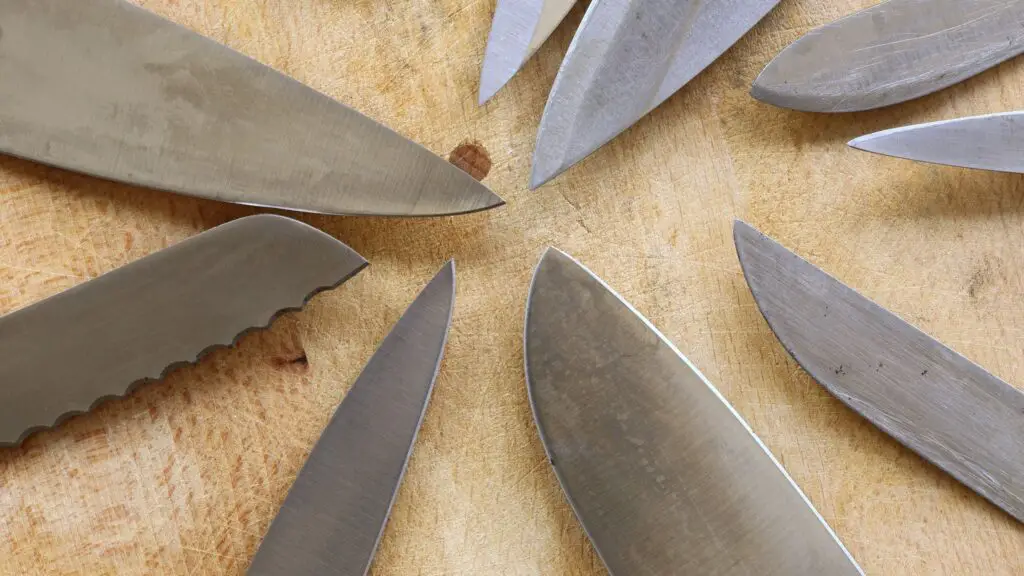
Maintaining the Condition of Your Treasures
Preserving the condition of your antique knives is paramount to maintain their historical and monetary value. Here are some essential tips and practices for ensuring the longevity of your treasures:
Proper Storage: Store your knives in a controlled environment with stable temperature and humidity to prevent corrosion and damage. Specialized knife storage cases or rolls are ideal.
Cleaning and Maintenance: Regularly inspect and clean your knives, removing any dirt or residue that may accumulate over time. Use a soft, lint-free cloth and a gentle cleaning solution.
Avoiding Handling with Bare Hands: Minimize direct contact with the blades and handle materials to prevent the transfer of oils and moisture, which can lead to corrosion.
Blade Lubrication: Apply a thin layer of mineral oil or a knife-specific lubricant to the blades to prevent rust and corrosion.
Display with Care: If you choose to display your knives, make sure they are securely mounted or enclosed in a display case to protect them from dust and physical contact.
Creative and Elegant Display Ideas
Displaying your antique knife collection can be a rewarding way to showcase your passion for antique knife identification. Here are some creative and elegant display ideas to consider:
Shadow Boxes: Shadow boxes with custom-fit foam inserts can provide an elegant and secure way to display your knives while protecting them from dust and damage.
Wall Displays: Wall-mounted magnetic strips or knife racks can turn your knives into functional wall art, providing easy access for viewing.
Display Cases: Glass or acrylic display cases with adjustable shelving allow you to create a museum-quality presentation for your knives.
Floating Shelves: Floating shelves provide a minimalist, clean look while allowing you to arrange your knives in a visually appealing manner.
Curated Themes: Organize your knives by themes, periods, or styles to create curated displays that tell a unique story.
Showcasing Your Passion
The way you choose to display your antique knife collection is a personal expression of your passion and appreciation for these historical treasures. Consider incorporating elements of your own style and personality into your displays. Share the stories behind the knives, their historical context, and the thrill of identifying them. Involve friends and family in your journey, explaining the significance of each piece. By showcasing your passion, you not only honor the knives but also engage others in the world of antique knife identification.
For instance, imagine creating a themed display of knives from different historical eras and inviting guests to experience a slice of history during a gathering. Sharing your knowledge and enthusiasm can foster a deeper appreciation for antique knives and the art of identification.
Preserving and displaying your antique knives is not only about safeguarding their physical condition but also about perpetuating the stories they hold. By maintaining their quality and creating captivating displays, you ensure that these hidden historical gems continue to captivate and educate future generations. In doing so, you become a custodian of history, sharing the fascination of antique knife identification with the world.
Conclusion
In the captivating world of antique knife identification, we’ve unraveled the allure of these storied blades, emphasizing the paramount importance of mastering this skill. Through our exploration, we’ve discovered that antique knives are not mere collectibles; they are tangible links to history, each one narrating the story of a bygone era. The significance of accurate antique knife identification extends far beyond the thrill of collecting – it connects us to the craftsmanship, culture, and technology of the past.
We’ve taken you through a comprehensive guide, delving into the step-by-step process of identifying these hidden historical gems. You’ve learned the value of effective resources and references, while also gaining insights into real-life examples of valuable finds. By understanding the historical and monetary worth of these knives, we’ve revealed that antique knife identification is not only a passion but a treasure hunt with real rewards.
The journey doesn’t end with identification; it continues through the preservation and elegant display of your antique knives. By safeguarding their condition and showcasing them with creativity and flair, you breathe life into these relics of history, ensuring their stories continue to inspire and educate.
As you embark on your own voyage of antique knife identification, remember that your knowledge and enthusiasm are bridges to the past. Share your experiences and discoveries, foster connections within the collector community, and inspire others to join this remarkable journey.
For more insights into the world of antique identification, you can explore our article on Antique Wood Stove Identification. This resource will lead you into the fascinating realm of identifying antique wood stoves, offering yet another opportunity to uncover hidden historical gems. Happy collecting, and may your antique knife identification adventures be as rewarding as they are captivating!
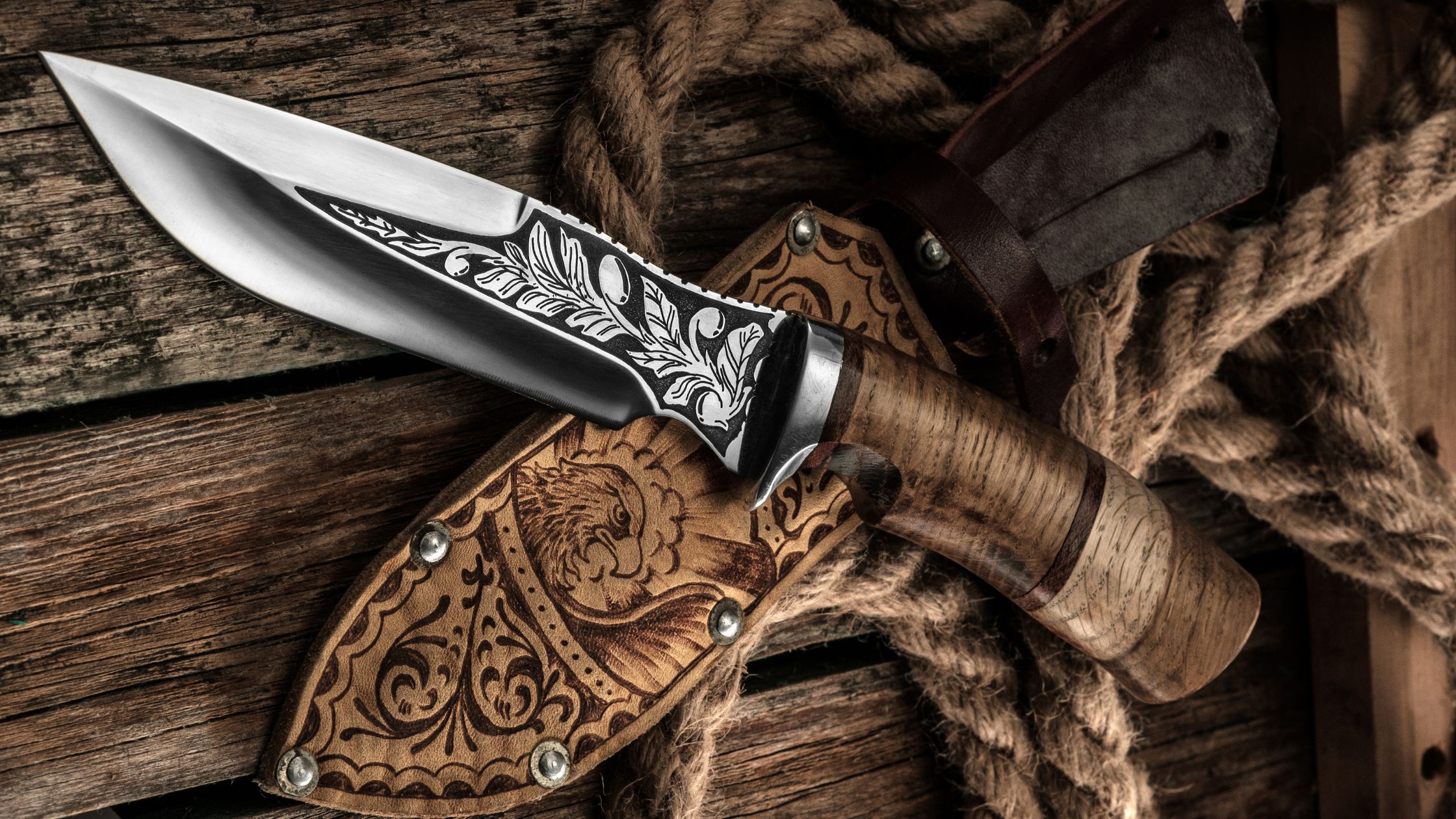
Leave a Reply